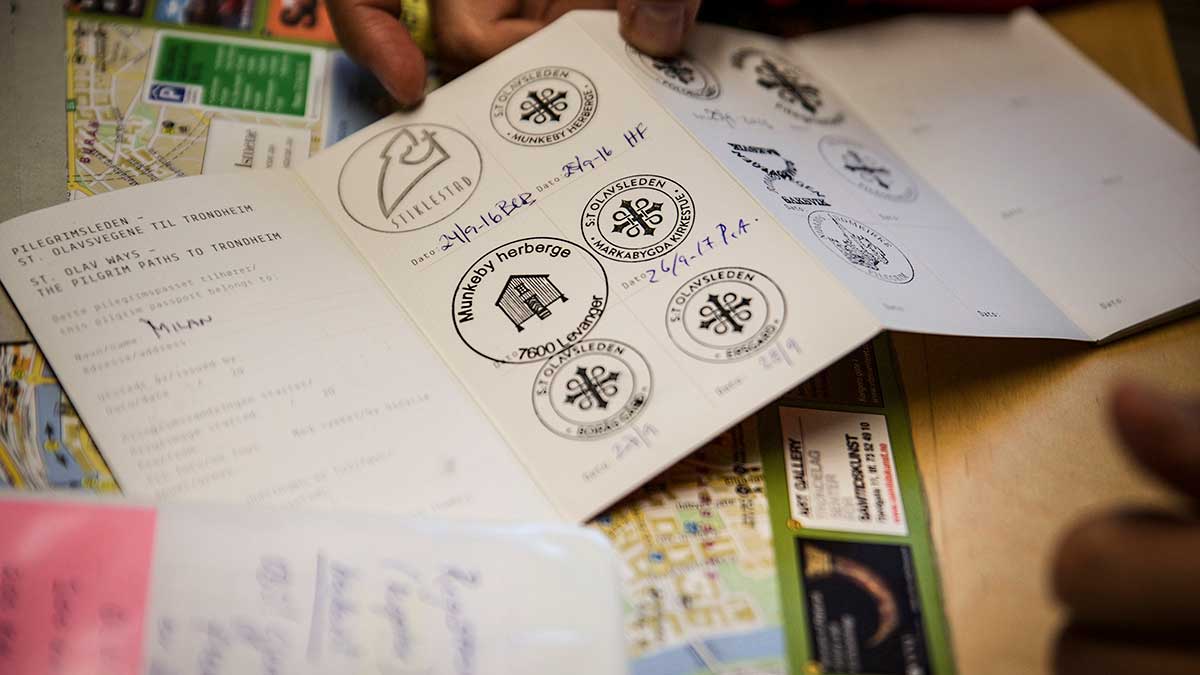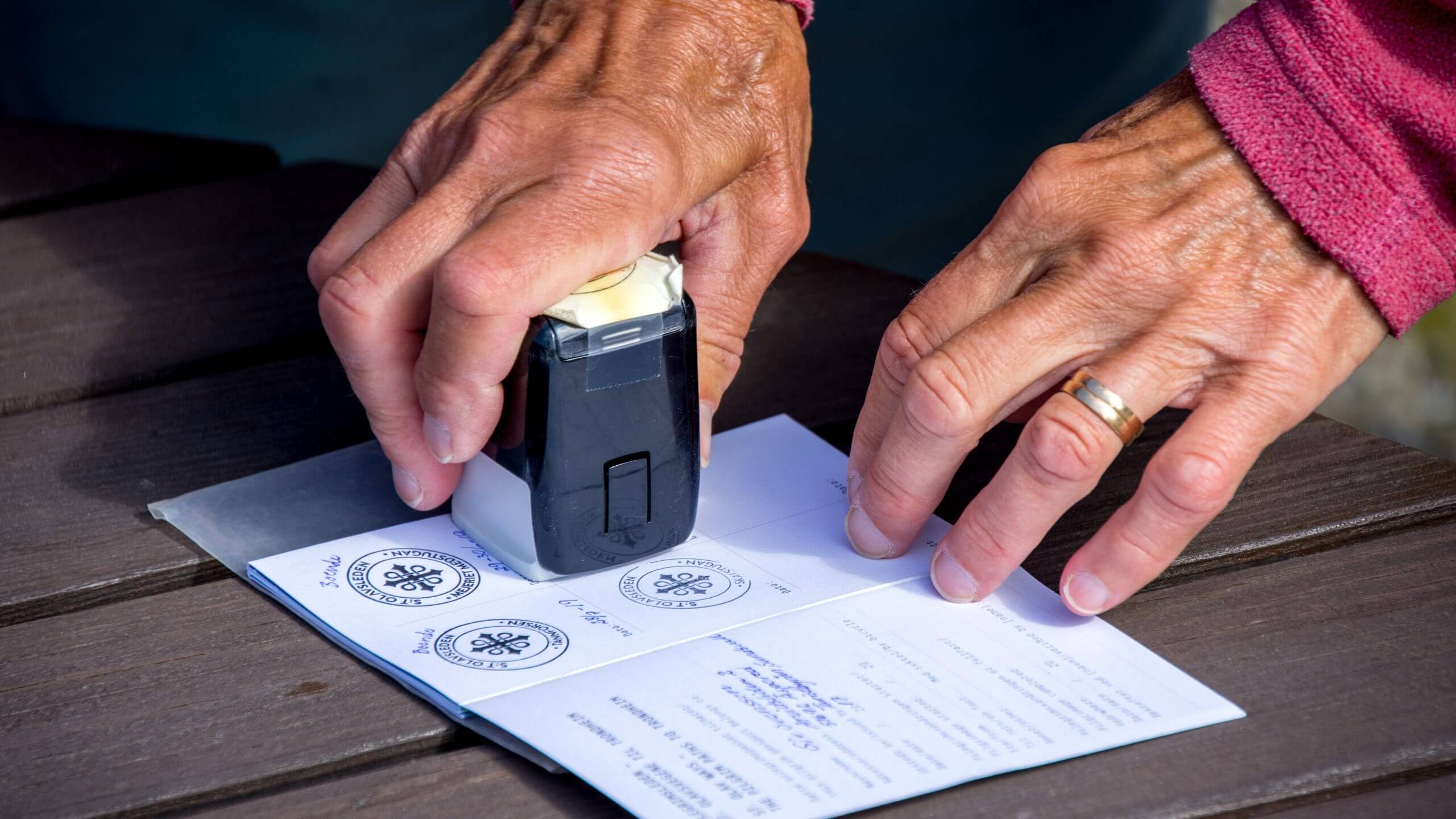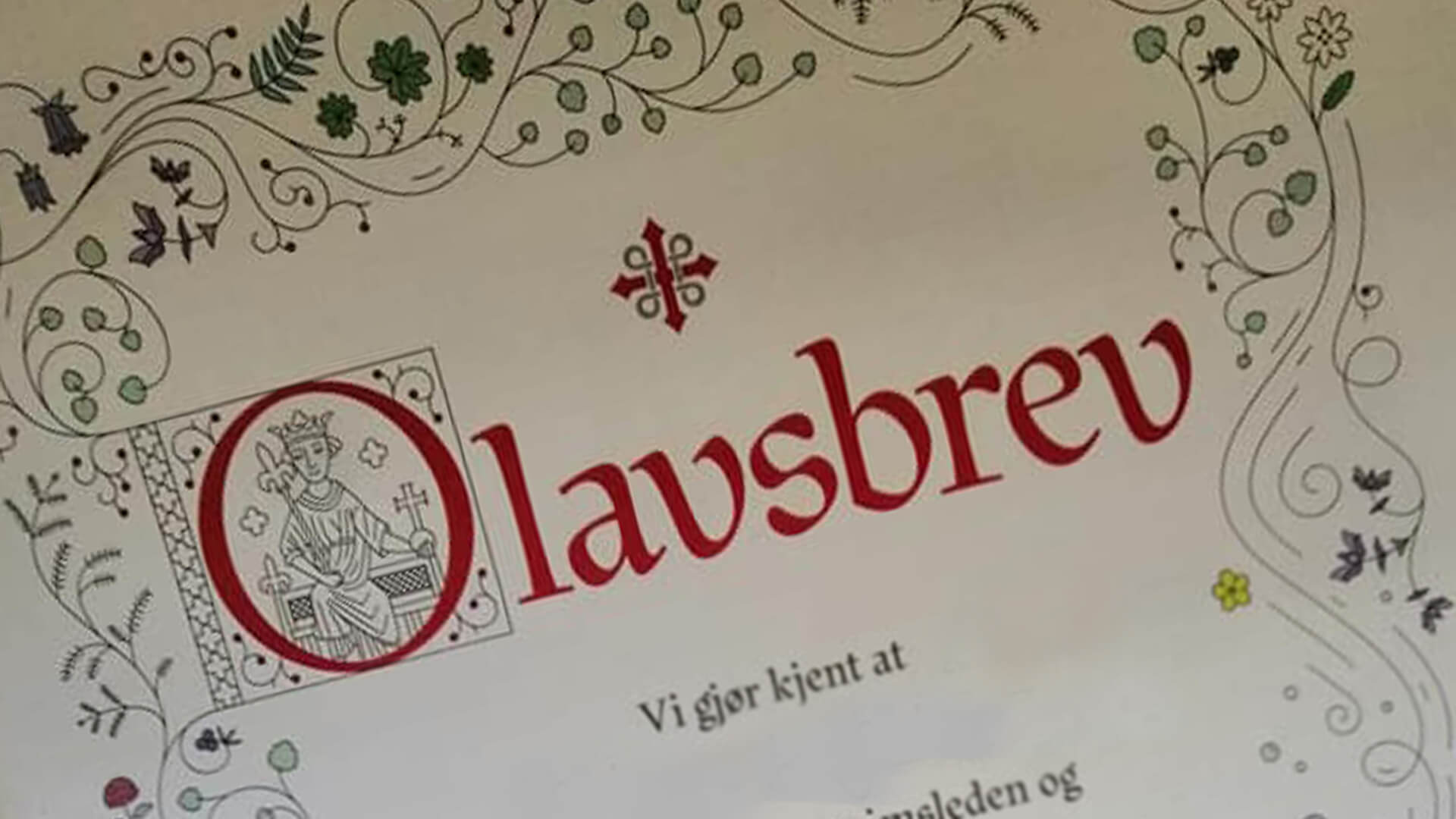History
Pilgrim passports and pilgrim stamps are a long-standing part of the Christian pilgrim tradition.
The pilgrims of old would often carry a passport that the priest would stamp to certify that the holder was a true pilgrim. Showing the passport also made it easier to get a bed for the night. Years ago, carrying a pilgrim passport meant that you could wander freely around Europe without being stopped by rules and borders. The stamps in the passport also helped to record those journeys that were more of a penance hike.
Still today, a pilgrim passport is a record of your journey. It has space for stamps that you collect during the trip. Nowadays, the passport and stamps are more of a symbol of the journey and a fun souvenir – but above all, a way to prove that you have hiked at least the last 100 kilometers to Nidaros or biked at least 200 kilometers. That’s how you gain your diploma, Olav’s letter, which you collect at Pilegrimsgården right next to Nidaros Cathedral in Trondheim. The passports used today can still be signed and blessed by a priest before the start of the journey.
Correction in the guidebook:
In the guidebook S:t Olavsleden – a pilgrims path in northern Scandinavia tells you that you can walk 100 km along any part of the trail to get the diploma. That’s not right. You must pass at least 100 of the last kilometers towards Nidaros to get the diploma. We apologize for any misunderstandings this may have caused.
Get a passport?

You can buy a St. Olavsleden pilgrim passport for a symbolic amount at all tourist information offices in Sweden along the trail (please check opening hours), as well as at Selånger Pilgrim center, Stiklestad Pilgrim Center, Quality Hotel in Sundsvall and Nidaros Pilegrimsgård in Trondheim. You can also get your passport in the old church in Åre or Duved’s church (which are open every day from 08 am to 08 pm). You can also order a pilgrim passport at the Northern Pilgrim Shop.
Stamps

There are different kinds of stamps, but the important thing is that they indicate the place you have walked by. You can collect a stamp at your accommodation, in churches or other places along the trail. About two stamps per day is enough. A tips is to ask the places where you stop along the way if they have a stamp. Also keep an eye out for the unmanned places, where the stamp is placed in a red post box or small wooden cupboard.
Pilgrim diploma

Olav’s letter dates back to the same time as the old European pilgrim documents. The illustrations are from the shrine in Hedal, Norway (1250) and show St. Olav and the pilgrim apostle St. Jacob in Santiago, Spain. St. Jacob is the universal pilgrim. There’s a sculpture of him in Nidaros Cathedral with his typical hiking equipment: a hat, staff, bag and pilgrim conch shell. Olav’s letter also contains a simple map with a number of different pilgrim trails. This is to illustrate that Nidaros can be considered in the same context as the pilgrim trails in Rome and Santiago de Compostela.
20% off at Jamtli, Östersund
When showing your pilgrim pass, you have a 20% discount on the entrance fee to Jamtli Historieland and Museum in Östersund. You can also buy the Pilgrim Pass at Jamtli. Read more about Jamtli at jamtli.com


